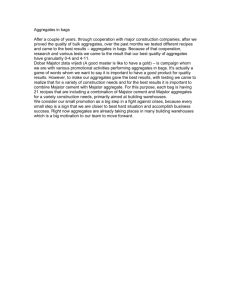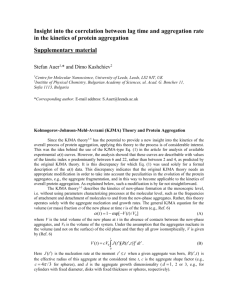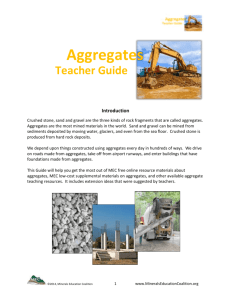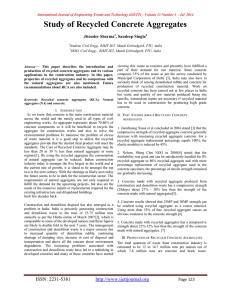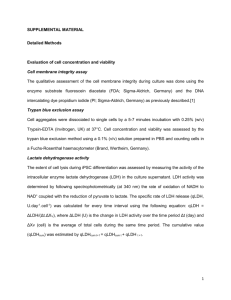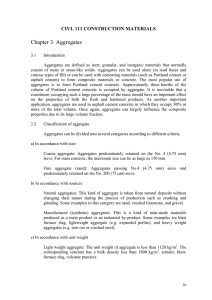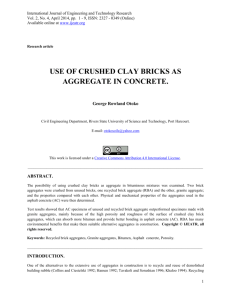Recycled Aggregates
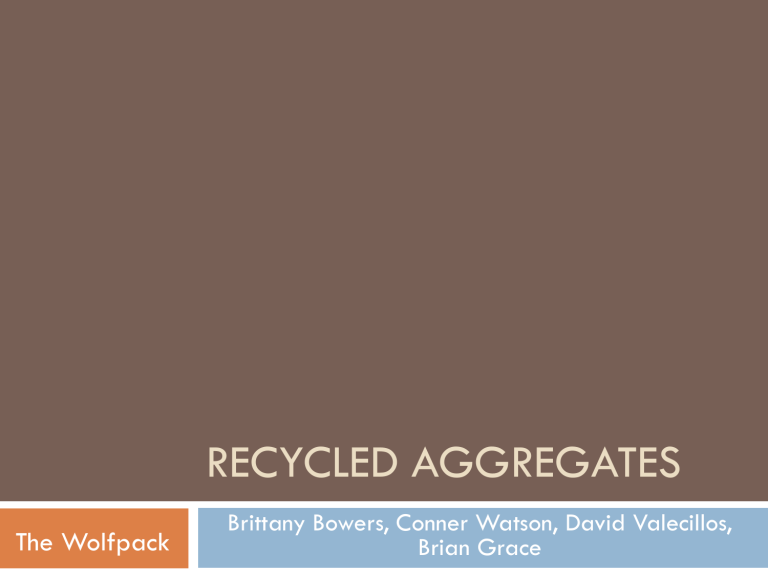
The Wolfpack
RECYCLED AGGREGATES
Brittany Bowers, Conner Watson, David Valecillos,
Brian Grace
What Are Aggregates?
Aggregates are used in the making of concrete
Concrete is composed of water, cement paste, coarse aggregates, fine aggregates, and admixtures
Aggregates help the strength of the concrete by filling in void spaces and resisting compressive stress.
Why Should We Use Recycled
Aggregates?
Recycled aggregates are a way of reusing materials by keeping them from being disposed into landfills
They are more cost efficient than most regular aggregates
Recycled aggregates lower the amount of energy and raw materials used for the production of it
Production
Each and every aggregate is produced differently
Our group chose to focus on 4 main types of sustainable aggregates
Recycled Concrete
Poraver
Granulated Blast Furnace Slag
Recycled Concrete Production
Simple process involving breaking removing and crushing concrete into specified size and quality
(sold at a size of 37.5mm – 50mm)
Reinforcing steel and other embedded items must be removed before the quality of the aggregate can be produced
Removal of contaminants is achieved by demolition, screening or air separation, and reduction of size
Poraver Production
Post consumer glass is collected through municipal box programs
Glass is sent to a plant where grinded up to a powder, mixed with water and expanding agents, and is put into a furnace
Cooks at 900 degrees Celsius to produce the tiny lightweight glass balls
The finished product of Poraver
Ground Granulated Blast Furnace Slag
Production
Slag and iron are collected at the bottom of a blast furnace when iron is processed
Slag is separated from iron and then undergoes granulation
Granules are then cooled down which creates a non-metallic product
Advantages of Recycled Aggregates
Recycled Concrete
Provides sustainability
Reduces the amount of material that would be delivered to a landfill
Any metals that can be removed from the aggregate can be disposed properly
Reduces the need of virgin aggregates to be created
Absorbs large amount of carbon dioxide while being crushed into smaller sizes, reduces the amount of CO
2 in the atmosphere.
Advantages of Recycled Aggregates
Poraver
Highly heat insulating
Low weight and high compressive strength
Resistant to chemical and alkaline attack
Excellent thermal and sound resistant properties
Inflammable and weather resistant
Does not provide a breeding ground for bacteria and mold
Advantages of Recycled Aggregates
Granulated Blast Furnace Slag
Uses 90% less energy in production than the production of portland cement
Emission of carbon dioxide is almost negligible
Provides improved strength and durability
Reduces permeability
Improves workability
Concrete Canoe
50% of the total amount of aggregate by weight must come from sustainable aggregates
Last week the mix design team picked our final mix to use pelletized milk jugs and cenospheres as our recycled aggregate based on compressive strength tests
Works Cited
http://www.cement.org/tech/cct_aggregates_recycled.asp
Www.slagcement.org
http://www.dgmenterprise.net/ground-granulated-blast-furnace-slag.htm
http://dcnonl.com/article/id35458 http://www.poraver.de/#/poraver http://www.fhwa.dot.gov/infrastructure/materialsgrp/ggbfs.htm
http://www.bgs.ac.uk/planning4minerals/Resources_1.htm
http://www.cement.org/basics/concretebasics_aggregate.asp
http://poraver.com/

